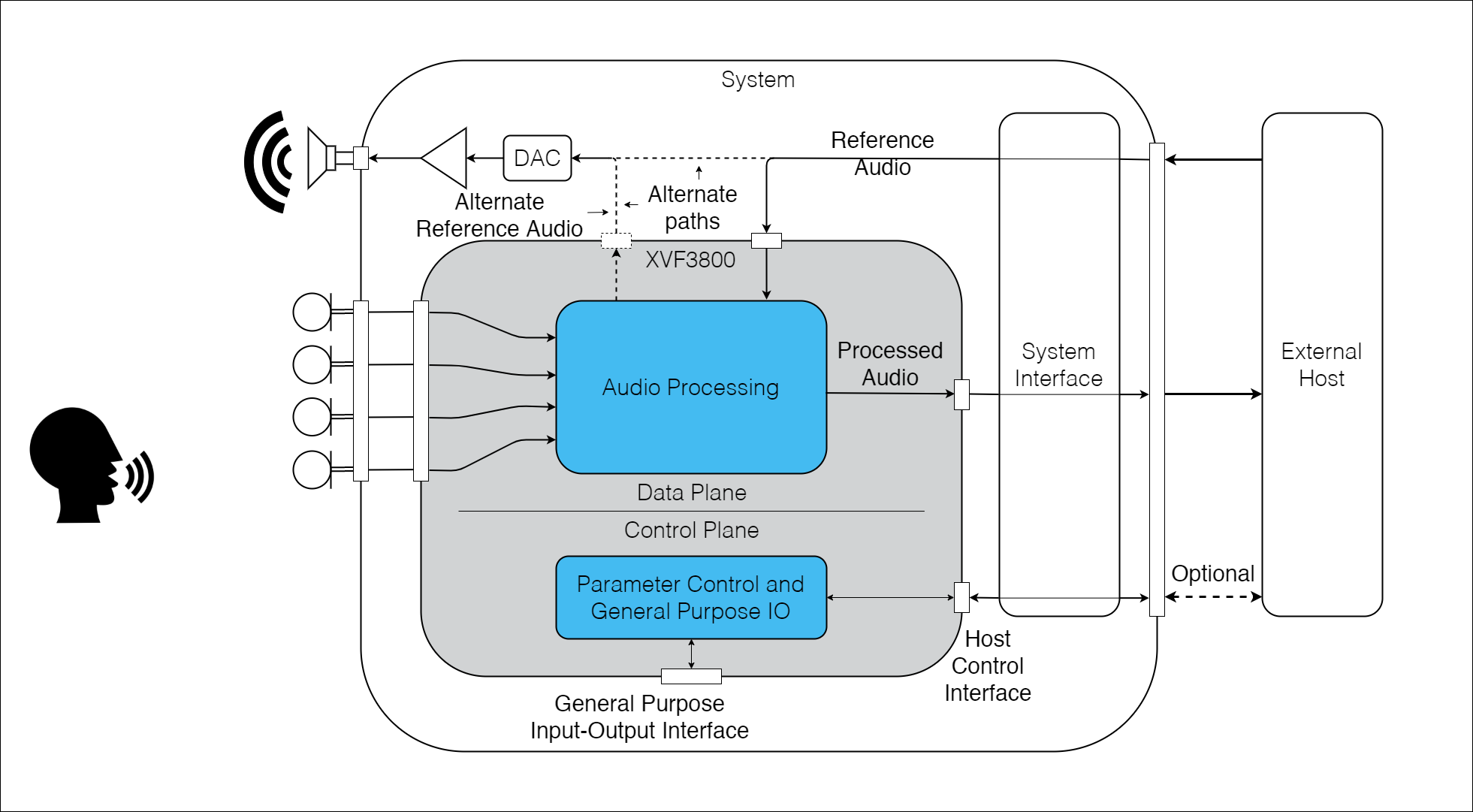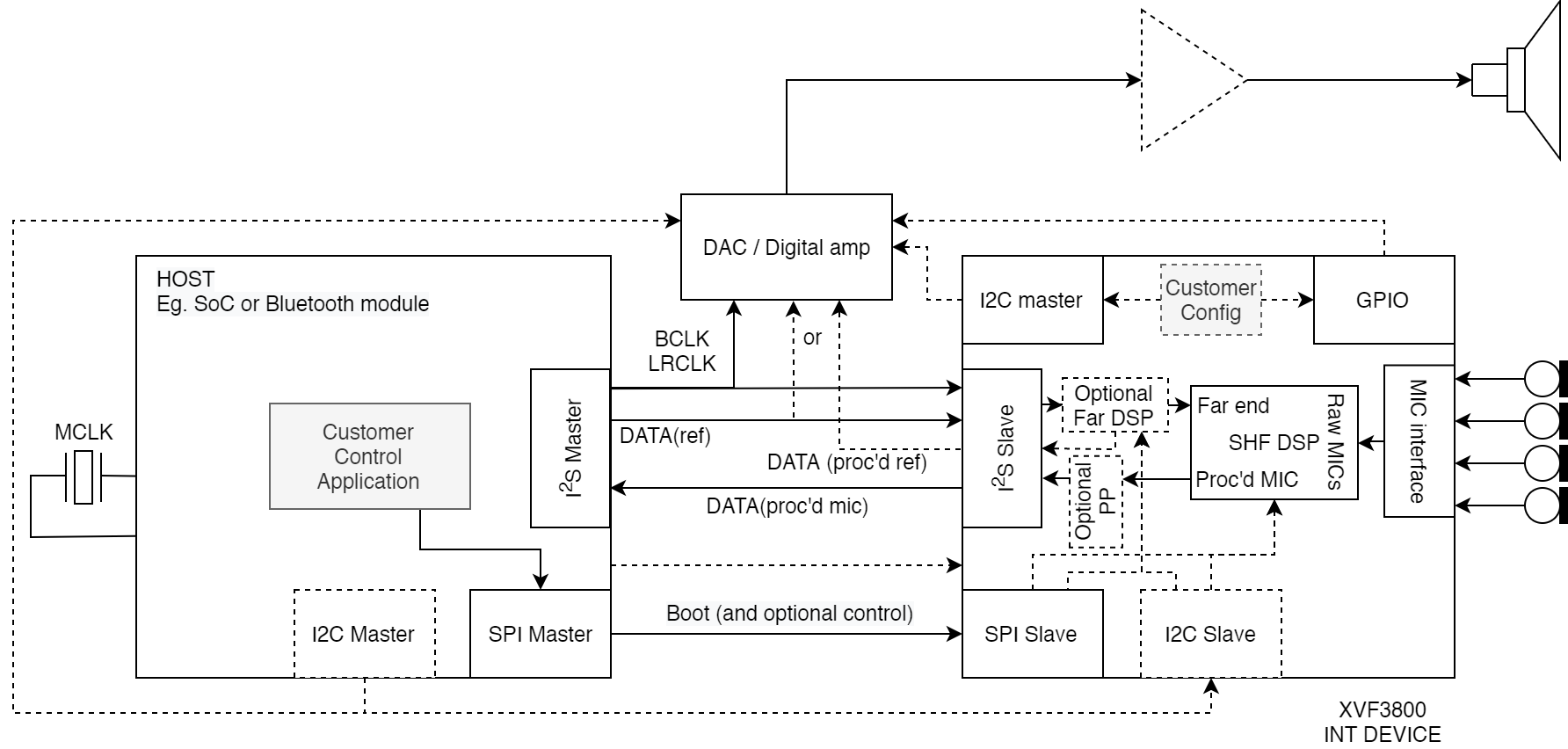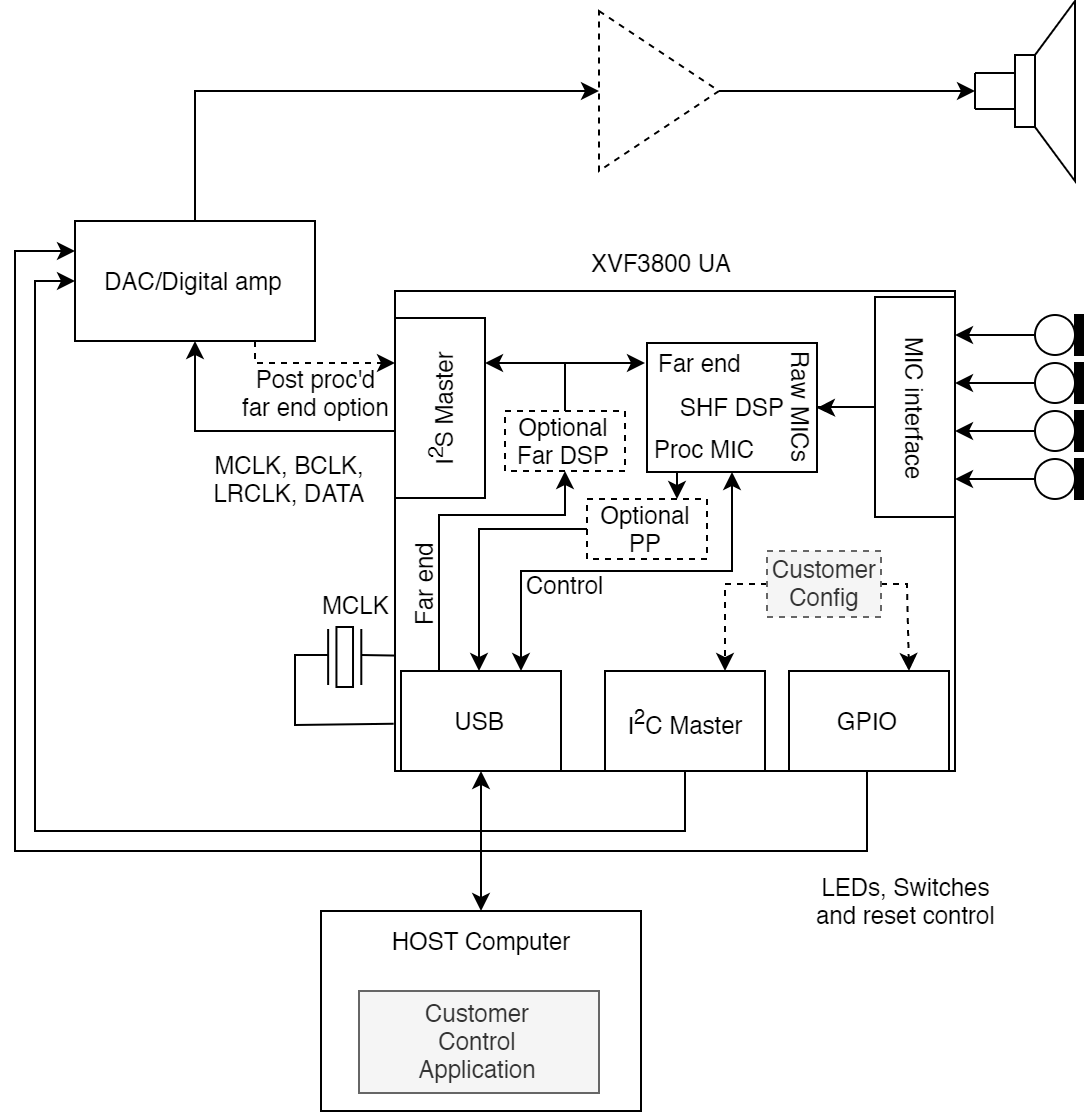Product Overview#
Introduction#
The XMOS VocalFusion ® XVF3800 is a high-performance voice processor that uses microphone array processing and a sophisticated audio processing pipeline to capture clear, high-quality speech from anywhere in a room. The XVF3800 uses the XMOS xcore.ai processor and supports a range of integrated and accessory voice communication applications.
The XVF3800 is a highly customisable design that combines an XMOS processor and application firmware into a single solution. It offers system designers the flexibility to integrate the XVF3800 into different designs. The xcore.ai processor has a powerful architecture which delivers high performance, real-time audio processing while the XVF3800 firmware is designed to be easily customized, allowing users to modify it as required.
In addition to the audio processing functions, the XVF3800 includes range of standard interfaces that enable it to be connected to a wide variety of devices. It supports a simple, intuitive control interface that enables designers to quickly and easily configure the system and perform common tasks.
The overall system context for the XVF3800 is shown below. In most applications the XVF3800 device will operate in conjunction with an external host processor.

Fig. 1 XVF3800 device system context#
This datasheet describes the main functional blocks in the XVF3800 and includes a reference configuration for the device. Details of the firmware features and the configuration and customisation options are provided in the XVF3800 User Guide.
Important
Voice Processing#
The XVF3800 voice processor converts and enhances audio captured using four low-cost digital microphones. Processed audio streams are suitable for use in voice communications applications and benefit from a range of configurable audio processing techniques to allow customisation to the use case. The embedded audio processing provides the following features:
4 microphone far-field operation.
Full 360-degree and 180-degree operation depending on microphone geometry.
16 kHz voice processing, with optional 16 kHz and 48 kHz interface sampling rates.
Full duplex, mono, Acoustic Echo Cancellation accommodating highly reverberant environments. (Reference audio for cancellation provided via either an I2S or USB interface).
Configurable bulk delay insertion to account for audio delays ensuring optimal echo cancellation with all audio output paths.
Multi-beamforming and de-reverberation with coherent addition and suppression of room reflections through energy harvesting.
Removal of coherent point noise sources using generalized side-lobe cancellation.
Stationary and non-stationary dynamic echo and noise suppression.
Adjustable gain over a 60 dB range with automatic gain control.
Audio output filtering and range limiter.
Indication of Direction of Arrival (DoA) for the selected speaker.
Peripheral Interfaces#
The XVF3800 voice processor provides the following additional interfaces to increase usability and reduce total system cost:
5 General Purpose Output (GPO) pins. These can be configured as simple digital I/O pins, Pulse Width Modulated (PWM) outputs and rate adjustable LED flashers.
2 General Purpose Input (GPI) pins. These can be used as simple logic inputs or event capture (edge detection).
These GPO can be controlled and the GPI states read by the host system over the control interface (SPI, I2C or USB, depending on the firmware configuration). A range of triggering conditions are supported and the INT_N output can be used to signal an interrupt to the host system when a GPI is triggered. See the XVF3800 User Guide for further information.
System Firmware#
The VocalFusion XVF3800 voice processor can be booted over SPI by a local host processor or from a separate, user-supplied, QSPI Flash memory.
Note
The two XVF3800 configurations: one providing I2S/I2C/SPI interface (XVF3800‑INT) and one providing a USB interface (XVF3800‑UA) are delivered as separate sets of firmware.
System Configurations#
The XVF3800 can be configured to operate in a number of system designs and supports a range of interfaces. The main configurations are:
Config |
Application |
Audio |
Control |
|---|---|---|---|
INT-Device |
Integrated voice processor |
I2S |
SPI or I2C |
UA |
USB Accessory |
USB UAC 2.0 |
USB Endpoint 0 |
The control interface is optional - the XVF3800 can be configured with optimised audio parameters as the default power-on settings.
Functional block diagrams of the XVF3800 in typical integrated and USB accessory applications are shown in the figures below.

Fig. 2 Functional block diagram of XVF3800 in INT-Device configuration#

Fig. 3 Functional block diagram of XVF3800 in UA configuration#